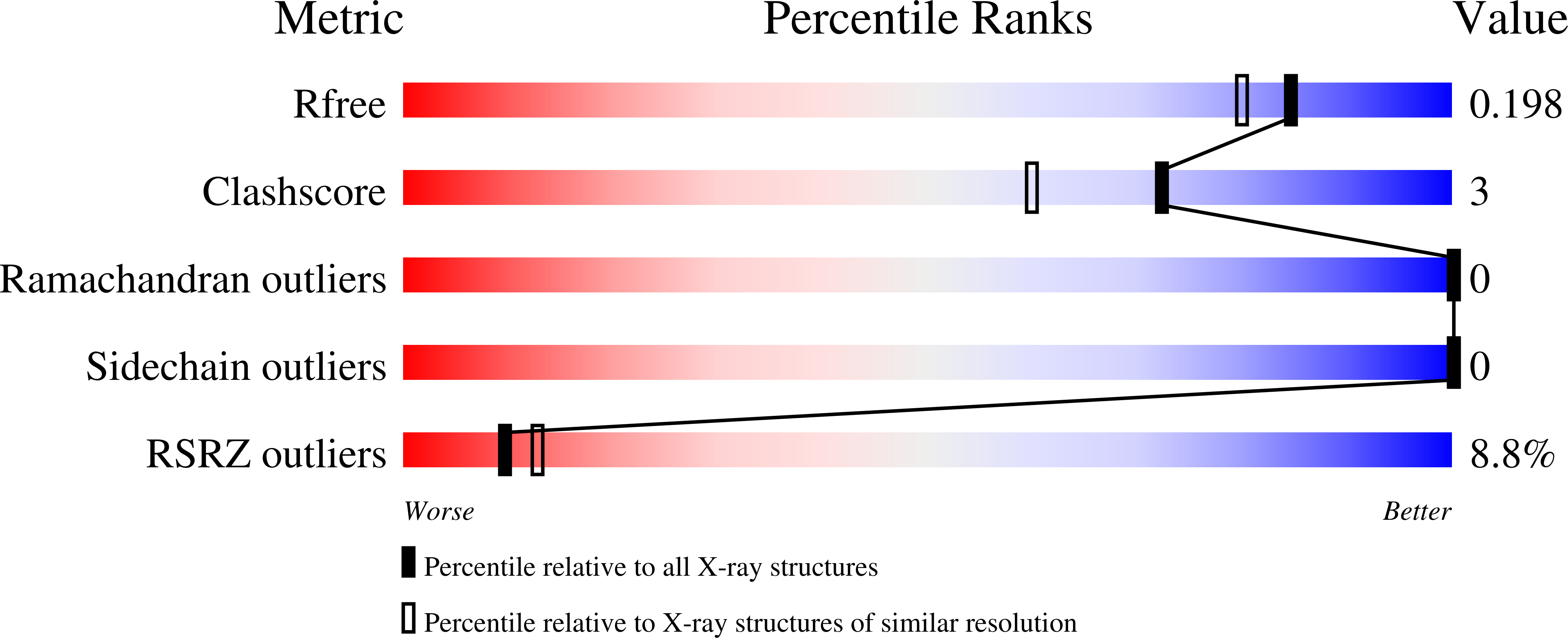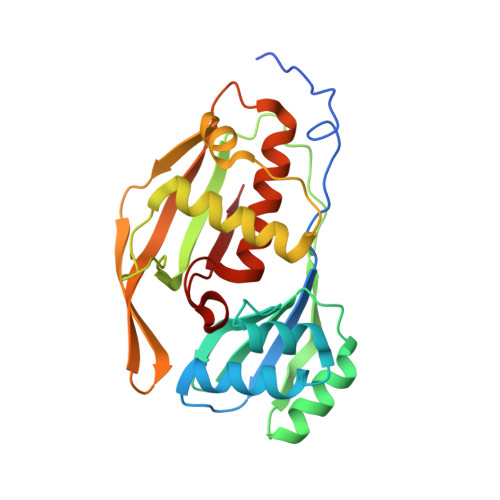Structural basis of Type IV CRISPR RNA biogenesis by a Cas6 endoribonuclease.
Taylor, H.N., Warner, E.E., Armbrust, M.J., Crowley, V.M., Olsen, K.J., Jackson, R.N.(2019) RNA Biol 16: 1438-1447
- PubMed: 31232162
- DOI: https://doi.org/10.1080/15476286.2019.1634965
- Primary Citation of Related Structures:
6NJY - PubMed Abstract:
Prokaryotic CRISPR-Cas adaptive immune systems rely on small non-coding RNAs derived from CRISPR loci to recognize and destroy complementary nucleic acids. However, the mechanism of Type IV CRISPR RNA (crRNA) biogenesis is poorly understood. To dissect the mechanism of Type IV CRISPR RNA biogenesis, we determined the x-ray crystal structure of the putative Type IV CRISPR associated endoribonuclease Cas6 from Mahella australiensis ( Ma Cas6-IV) and characterized its enzymatic activity with RNA cleavage assays. We show that Ma Cas6-IV specifically cleaves Type IV crRNA repeats at the 3' side of a predicted stem loop, with a metal-independent, single-turnover mechanism that relies on a histidine and a tyrosine located within the putative endonuclease active site. Structure and sequence alignments with Cas6 orthologs reveal that although Ma Cas6-IV shares little sequence homology with other Cas6 proteins, all share common structural features that bind distinct crRNA repeat sequences. This analysis of Type IV crRNA biogenesis provides a structural and biochemical framework for understanding the similarities and differences of crRNA biogenesis across multi-subunit Class 1 CRISPR immune systems.
Organizational Affiliation:
Department of Chemistry and Biochemistry, Utah State University , Logan , UT , USA.
















